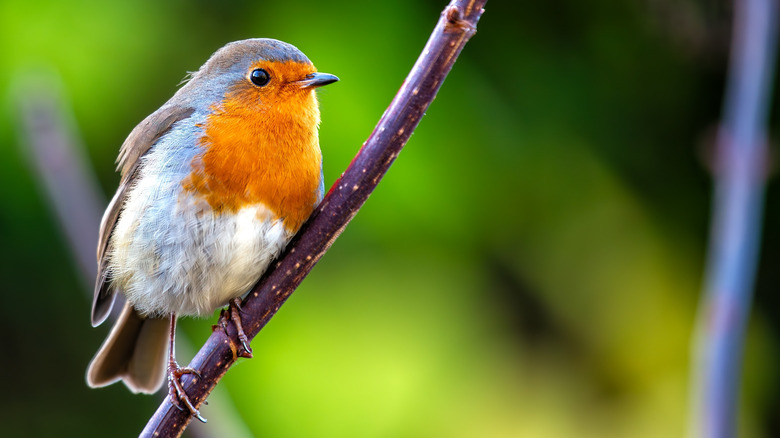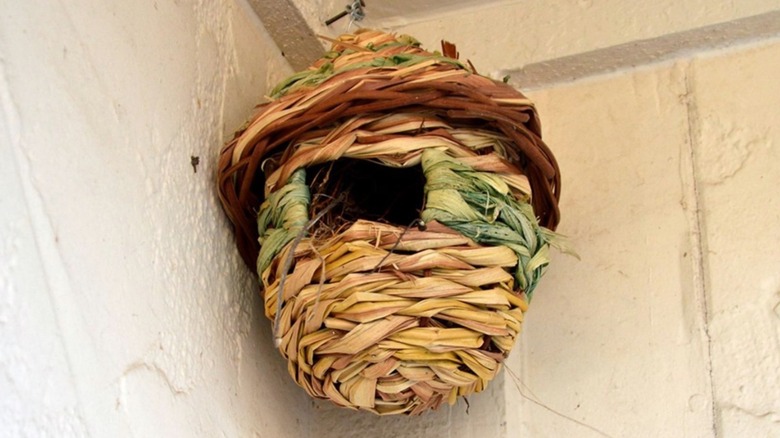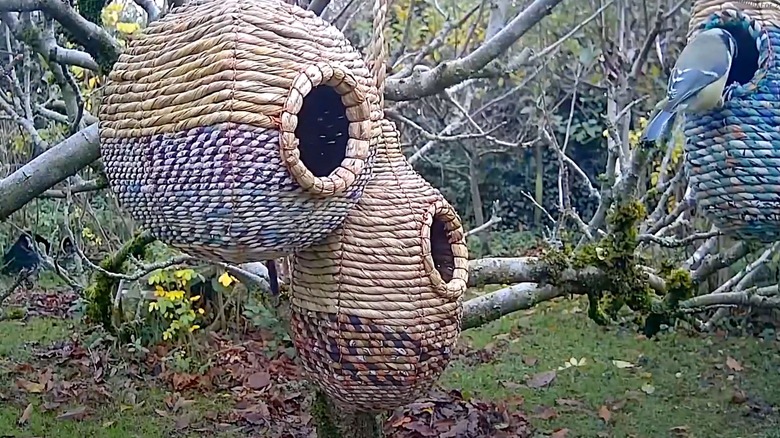What Are Roosting Pockets And How Do They Help Birds In Your Garden?
We may receive a commission on purchases made from links.
With winter fast approaching, some birds have already flown south to escape the cold weather. Not all birds, however, leave their habitats as the seasons change, and resident birds like chickadees, blackbirds, northern cardinals, and others are now preparing for the harsh realities of winter. Just as you can lend birds a hand with feeders and baths in the warmer months, you can also help your resident birds during cold weather with a roosting pocket.
One of the main factors in attracting birds to your yard during winter is ensuring that they have a comfortable habitat. That's where roosting pockets come in. These nifty baskets are woven out of natural materials like reed grass which allows them to blend into their environments. Unlike bird houses or nesting boxes that encourage birds to build their nests and raise hatchlings inside, a roosting pocket is solely designed to protect birds from the elements. To accomplish this, you'll notice that they have fewer ventilation holes to keep in heat. Alongside keeping birds warm, roosting pockets provide them with shelter from wind, storms, and snow.
With roosting pockets, you don't have to worry about a perfect time to put them in your yard. Although they are especially beneficial during winter, birds may use them at any time of year. However, you should make sure to clean them out when they aren't actively being used to ensure that they last as long as possible and to limit any bacterial growth. This includes removing any old feathers, debris, and giving the inside pocket a quick rinse with hot water.
How to pick the best roosting pocket for your yard
Roosting pockets aren't a one-size-fits-all situation, so you'll find that their designs vary. For example, some contain a small internal cavity that is only designed for one or two birds. Many species, however, like to huddle together in the cold, so you can also find roosting pockets that are designed to fit large groups.
To determine the best option for your yard, first consider the types of birds that you want to attract. Not all species of birds use roosting pockets. Some of their most common residents include many members of the tit family, like coal tits, and sometimes sparrows or robins. However, other bird species like barn owls, screech owls, and woodpeckers are also known to utilize roosting pockets.
If you're trying to attract only smaller birds, you can keep the entrance size to 1.5 inches in diameter. This will also help keep out aggressive species like starlings. Some great options include the Songbird Essentials Hanging Grass Roosting Pockets for $14.87, and Nature Niche's Post Mounted Grass Roosting Pocket for $14.79. For bigger species like owls and some woodpeckers, though, you'll likely need to build your own roosting pocket, as they need an entrance that is around 3 inches in diameter.
Where to mount your roosting pocket
The location of your roosting pocket is just as important as the design you settle on. Anytime you set out items for wildlife, you want to ensure that they are going to be safe using it. When setting out roosting pockets, mounting them securely on trees or posts is ideal to ensure that your shelter won't sway all over the place in brutal winter winds. You can also add a metal baffle under the box to deter any predators.
You can also hang your roosting pockets rather than mounting them as long as you're careful to keep them out of high winds. If you're able to place them amongst vegetation, that will more closely mimic the natural behaviors of birds. As a final tip, you should also place your roosting pockets in a south-facing position so they get as much sun as possible. But don't be afraid to place a few roosting pockets in your yard and take note of what the birds in your area prefer!
Once your roosting pockets are ready, consider prepping your bird feeders for winter and putting a tennis ball in your bird bath before temperatures drop below freezing. Together, this will make your yard into the ultimate winter wonderland for all of your resident birds.


